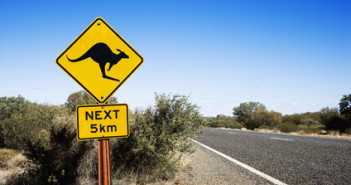RBA Meeting
The Reserve Bank of Australia at its latest board meeting kept the official interest rate on hold at 2.5%, which is its lowest level in 14 years. The rate first hit this level in August last year and has remained there ever since. Recent economic news out of Australia such as the unemployment rate have fallen short of expectations which has most analysts predicting that rates will be on hold until at least the middle of next year.
Guest Post by Andrew Masters from FiboGroup
Key points from the meeting
Despite falling six per cent in September the Australian dollar is still too high particularly given the declines in key commodity prices,†Mr Stevens said, so it “is offering less assistance than would normally be expected in achieving balanced growth in the economy.â€
The RBA’s inflation range is between 2% and 3% and it expects inflation to be remain within this range over the next two years.
Labor market data has been quiet volatile recently and the Bank thinks that it will be some time before we see a noticeable reduction in unemployment. Wage growth has noticeably declined and going forward is expect to remain relatively modest
Growth in the global economy is continuing at a moderate pace. China’s growth has generally been in line with expectations although there are some signs that suggest a slowdown in recent months. Commodity prices in historical terms remain high and some of those that are important to Australia have declined further in recent months.
Volatility in some financial markets has gathered momentum in recent weeks. Overall, however, financial conditions remain very accommodative. Long-term interest rates and risk spreads remain very low. Markets still appear to be attaching a low probability to any rise in global interest rates or other adverse event over the period ahead.
AUD/USD
The Australian dollar has fallen sharply from a yearly high of US95.04 to its current level of around US 87.50. Positive economic news out of the US showing that the country is back on track for an economic recovery has been a major factor in the decline as investors chase US denominated assets. Most analysts are now pricing in a rate hike from the Federal Reserve in the first half of 2015 which is sooner than most thought which will close the gap in interest rate differences between the two countries and put more pressure on the Aussie currency.
Commodity prices
Iron-ore prices shot up 4% late Monday the biggest one-day gain since March, after data showed that China’s imports of the commodity jumped last month, and Chinese steelmakers began buying again  China is the biggest buyer of Australia’s key export. Analyst are divided on whether Iron ore has finally reached a bottom or this was just a short boost in a continuing downtrend. The price has been hovering around 5 year lows for most of the month.
The recent turbulence in the price has led to a downgrade to price forecasts by investment bank UBS. UBS analyst Daniel Morgan said the firm now expects iron ore to average $US85 a tonne in 2015 and $US82 a tonne in 2016, well shy of previous expectations for prices of about $US103 a tonne.
Australian share market
Share markets have suffered heavy losses in recent weeks including the Australian share market, which is off nearly 8% from its recent high. Leading the round of disappointing news, which led to the pullback, was news from the IMF that it cut its global growth forecast for this year and the following year. Global growth is now expected to come in at 3.3%instead of 3.4% in 2014, and 3.8% in 2015.
International investors are also starting to pull out of the Aussie market as the falling Australian currency poses too much of a risk on capital preservation and analysts predict they expect to see the currency settle around US80.00 cents which will only add to the capital flight.
Mining shares have been the biggest drag on the market due to the fall in commodity prices and some new tariffs introduced by China on coal imports. From Wednesday, China will introduce a 3% tariff on coking coal, which is used in steel making, and a 6% tariff on thermal coal, which is used in electricity generation.These moves will have a profound effect on the exportation of coal from Australia and hit the bottom lines of listed miners. The timing couldn’t be worse due to oversupply and sluggish demand in China as their economy slows. The new tariffs are portrayed as an attempt by China to protect domestic coal miners.



